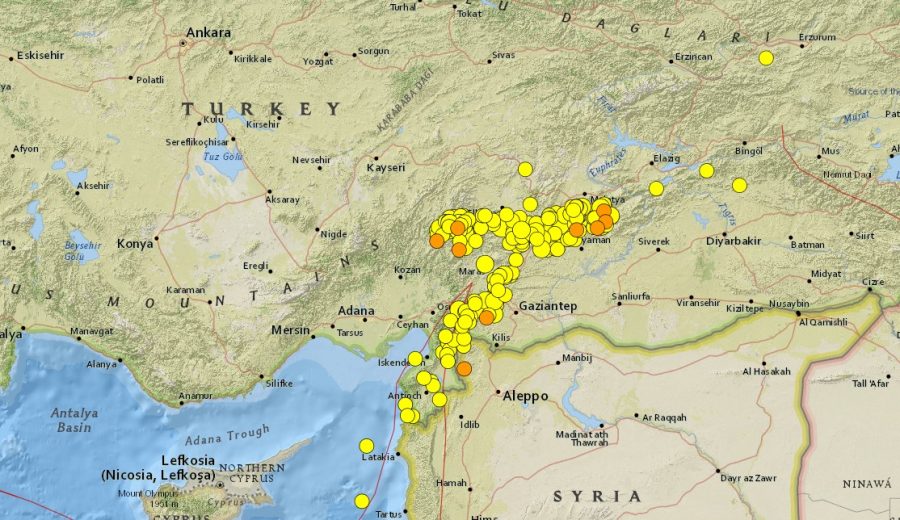A series of devastating earthquakes, including one that measured 7.8 on the Richter scale, hit Kahramanmaras, Turkey at roughly 4 a.m. on Feb. 6. According to the latest information from the Turkish government, the earthquakes have so far resulted in a confirmed 12,391 deaths and 62,914 injuries, with more bodies expected to be discovered in the weeks to come.
Yet four days after the press release, the death toll has continued to climb significantly. As of Feb. 13, the combined death total (between Syria and Turkey) has reached more than 34,000, according to the latest figures from CNN.
According to the United States Geological Survey, “an earthquake this size has the potential to be damaging anywhere in the world, but many structures in this region are particularly vulnerable.” The architecture of local buildings, which were not designed to withstand quakes, contributed greatly to the amount of damage done to the area.
In response to the disaster, a massive search and rescue effort was launched, with 22,277 personnel from various national and international organizations on the ground. In addition, 5,709 personnel from other countries were dispatched to the disaster area following negotiations with the Ministry of Foreign Affairs.
“The earthquake in Türkiye and northern Syria is a disaster without recent precedent. The extent of the loss of life and physical damage is becoming clearer by the day. The consequences are truly horrendous. As President of the Council of the European Union, Sweden wants to ensure that the EU’s assistance is adequate to meet the need of the Turkish and Syrian people in this terrible time,” said Ulf Kristersson, the prime minister of Sweden.
With no end in sight, Turkish President Tayyip Erdogan declared a national state of emergency for the next three months and planned to allocate significant resources to repair the damage brought about by the disaster.
“Our biggest consolation is that more than 8,000 citizens have been rescued from the rubble so far,” Erdogan said.
The tremors, which were measured at a magnitude of up to 7.8 on the Richter scale, were centered at the southern border of Turkey and Syria, resulting in widespread destruction and loss of life in both countries. The earthquakes were followed by over a thousand aftershocks in the hours that followed, which affected multiple provinces. Because the epicenter of the Kahramanmaras earthquake was only around 90 miles away from the Syrian border, the tremor also dealt a significant amount of damage to areas of Syria as well, adding to the total casualty count.
Videos shared on Twitter show utter devastation in Kahramanmaras, as buildings collapse and cars pile in the streets. However, social media has played a key role in helping rescuers find survivors in the midst of chaos, despite controversy erupting over a 12-hour ban on Twitter by the Turkish government.
“The result is cries for help being heard less. We know everything you’re trying to hide,” said main opposition CHP leader Kemal Kilicdaroglu, according to Reuters.
Those trapped under the rubble were able to contact aid or family members who were able to free them through the use of messaging platforms and social networks.
As the tragedy continues to unfold and the death toll continues to grow, so does the offer for help. 25 countries have allocated personnel, resources, and other aid to the Turkish government to help alleviate some of the stress created by the disaster. Despite this, many survivors on the scene state that they are not receiving help and the government has failed to respond in time and with enough manpower.
Updated Feb. 13, 2023.












